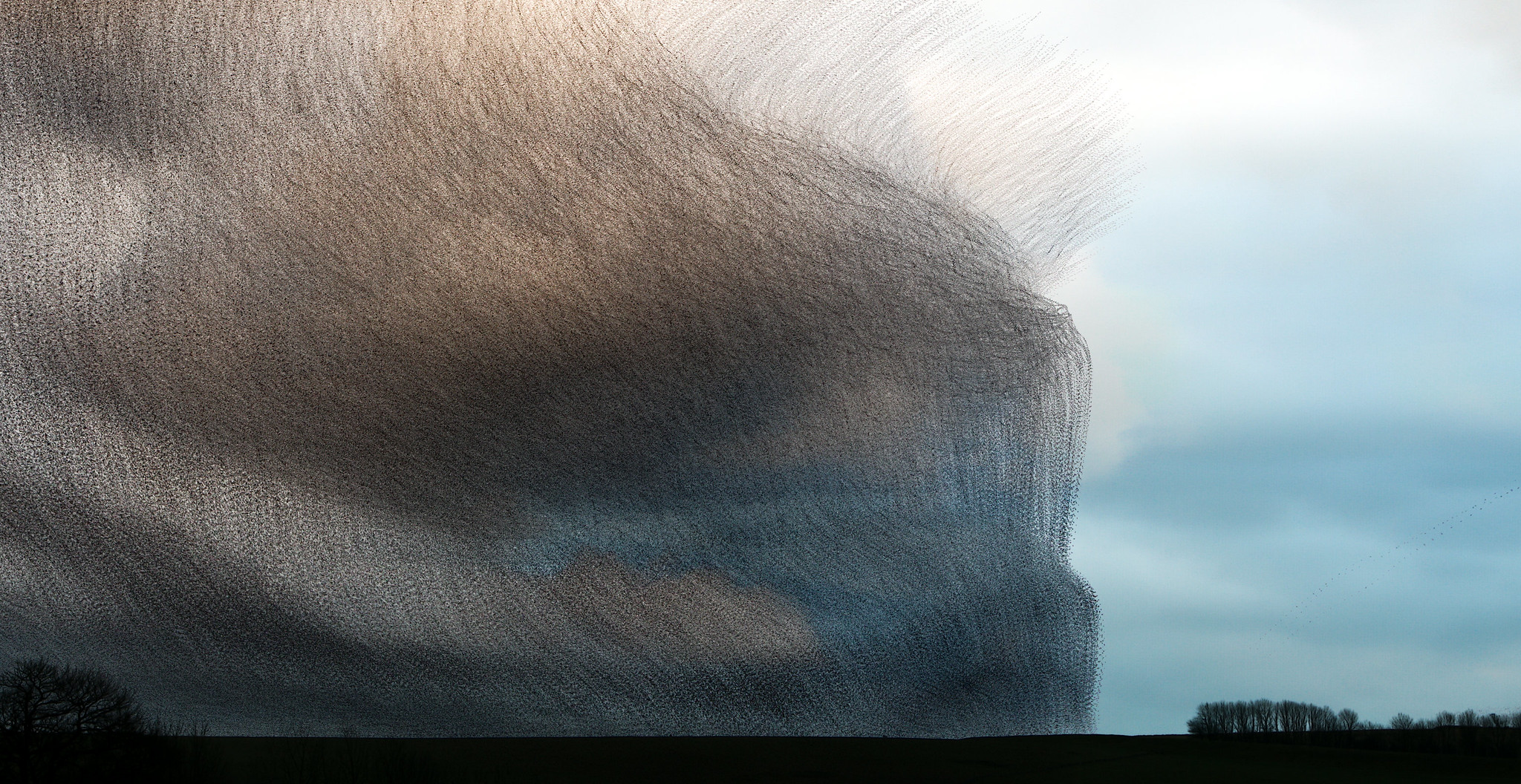.png)

Murmurations; An entrancing dance performed by thousands, if not hundreds of thousands of birds moving as if they are one; continuously reconfiguring their shape in response to their surroundings. The phenomena evokes strong emotions; reverence, curiosity and perhaps even a little fear. I have spent the past eight years photographing them.
The European starling migrates to the UK over the winter from colder northern European countries and gather in huge numbers at historic roost sites across the country. From November to March they draw crowds of captivated visitors.
Just before nightfall the birds arrive from their daytime feeding grounds. During the day they disperse into the fields to feed and return as small flocks which then funnel together into progressively larger groups along flight lines towards the roost.
If you are blessed with good luck, at dusk, starlings murmurate over their chosen roost site. Their fantastic aerial displays appear almost choreographed with patterns emerging and dissolving in the sky. I cannot help feeling filled with wonder when witnessing hundreds of thousands of individuals moving with such cohesion. The birds neither collide nor disperse, effortlessly avoiding obstacles and evading predators. As they pass overhead, they fill the air with an astonishing barrage of noise and vibration of the air. Not only are they visually breathtaking, but they engulf the other senses.
Individual flight paths lose their relevance with this collection focusing on texture and fluidity.

Into the Darkness. A sparrowhawk makes a foray into the swirling mass of starlings, returning moments later with a bird in its talons.

Smoke screen. Sometimes the flock is so large that it fills the horizon like a curtain of smoke. As they pass overhead, the sky darkens and the sound of thousands of wingbeats fills the air.

Perspective. Stretching to the horizon, these displays are visible for miles, likely acting as a beacon to signal the roost location.

Untitled 11. After a day’s dispersed feedings, small flocks funnel into progressively larger ones along flight lines to the roost.

Cyclone. The flock turns as it undulates above the wetland.

Funnel. The flock swirls, twists and turns, forming shapes like funnels and tornadoes as the birds seek a suitable spot to land.

Ebb and Flow. The flock is strangely peaceful in its immensity as it ebbs and flows like a tide over a mile of wetlands.

Untitled 7. The starlings confuse aerial predators by forming dense twisting shapes, ensuring the safety of the group.

Untitled 8. Peregrine falcons use the momentum in their powerful stoop to catch their prey, but it comes with a deadly risk of collision in such proximity to the flock.

Untitled 9. As darkness descends, the vast flock concentrates over the chosen roost site and the birds cascade to the ground.

Untitled 10. The Danish term for murmuration, “sort sol,” translates to “black sun” evoking the strangeness of the veiled landscape.